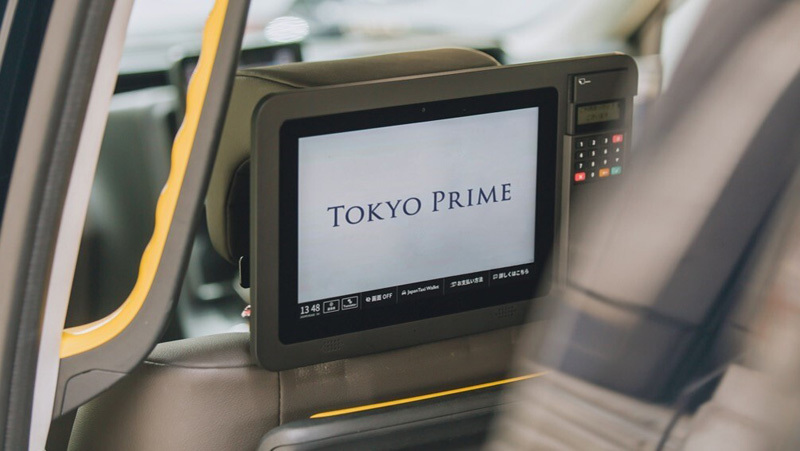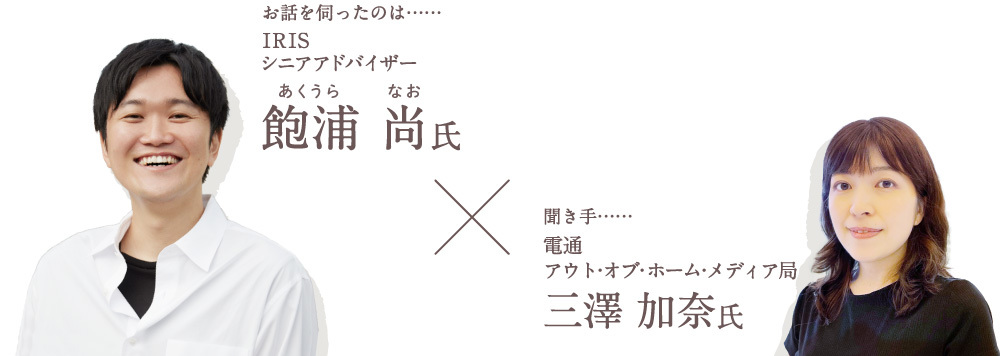The OOH (Out Of Home: outdoor advertising and transit advertising) market is expanding as digitalization advances.
Recently, various DOOH (Digital Out Of Home: advertising using digital signage) formats have been gaining attention. Compared to analog OOH, DOOH offers numerous advantages: easier ad placement, higher immediacy, the ability to reach targeted audiences, and measurable advertising effectiveness.
This time, to explore new trends in DOOH, we speak with Mr. Nao Akuura of IRIS, the company behind the taxi signage media "Tokyo Prime".
Taxi Advertising Continues to Grow, Focusing on B2B Advertising
──What kind of DOOH do you handle?
Founded in 2016, our company develops taxi signage media and handles advertising sales. It's utilized by numerous startups handling B2B products. Since 2017, the trend of startups placing ads on taxis accelerated and became popular, leading to a period where ad placements were temporarily unavailable.
I previously worked at a digital advertising company and was troubled by ad fraud (*). Taxi advertising is great because you can place ads on a tangible entity—the taxi itself—giving it a tangible feel. We also have strict screening criteria to maintain ad quality.
※Ad fraud: Fraudulent practices where machines artificially inflate impressions (ad views) or click counts.
──How are sales going?
Last year was tough due to people avoiding going out during the pandemic, but July to September 2021 saw our highest sales ever. One reason might be that even though people avoided trains, taxi ridership didn't drop significantly. Some companies reportedly encouraged using taxis instead of crowded trains. A major factor was that Nihon Kotsu, a key signage installation partner, maintained operations without suspending business, adopting an aggressive stance that prevented ridership from falling below projected levels. Additionally, abolishing the previous rule limiting B2B product advertising to half of total ad placements and actively promoting these products also contributed to sales.
──How are the ads delivered?
"Tokyo Prime" delivers ads by implementing an ad-serving application on Android OS devices with built-in SIM cards and communication capabilities, which then communicates with an ad server. The delivery system is structured with an architecture that treats the digital signage terminals like smartphones, enabling highly flexible operations such as instant ad replacements executed directly from the management interface.
──What are your future aspirations or challenges?
Taxis carry diverse passengers—not just businesspeople, but also seniors and homemakers. If the volume of ads becomes overwhelming, some viewers may stop watching. To keep them engaged, we focus on enriching our content.
For example, "Tokyo Prime Voice" is a program interviewing creators and CEOs behind products people want and outstanding services. Many companies express interest in appearing on this popular show. We also have "more 1 meter," a cultural information program, aiming to provide interesting content every time passengers ride (content available here ).
Moving forward, we plan to deliver region-specific content and serve ads that capture passengers' moments, such as when they feel like eating. Furthermore, we aim to expand into mobility sectors beyond taxis and are advancing proof-of-concept projects. Although we withdrew from overseas operations during the pandemic, we would pursue opportunities abroad if they arise. We believe Japan leads globally in taxi signage, especially since it integrates with payment systems.

After the interview...
Despite many people avoiding outings during the pandemic, Tokyo Prime achieved record-high sales, which I feel is a testament to the company's efforts. Taxis offer a private space with an average ride time of 18 minutes, ideal for ad delivery. While ads from companies selling office supplies are common due to the high number of business passengers, I heard they plan to increase original video content targeting diverse passengers going forward. Having little moments of insight or surprise during a taxi ride could make the journey more enjoyable.

This time, we interviewed a company handling DOOH in hair salons, elevators, and taxis. DOOH is also increasing in various other locations like pharmacies, drugstores, supermarkets, and restrooms.
While outdoor and transit advertising were the mainstream for DOOH, the decreasing unit cost of signage equipment and the growing number of DOOH ad delivery platforms have led to new DOOH installations in previously unseen locations.
Outdoor DOOH, while varying slightly by city, is typically installed in high-foot-traffic areas of downtown districts. Its key advantage is broad reach to a large, unspecified audience. Because many people gather there for diverse purposes, they naturally see the ads while passing by. Large ads displayed in the city take on a public nature, and when shared on social media, they gain even more exposure.
Conversely, new DOOH targets specific audiences in locations where people gather for particular purposes like work, beauty, or health. While the reach is smaller, the advantage lies in enabling relatively longer advertising communication at moments of heightened interest. Consequently, it serves as a marketing tool to approach prospects in the middle funnel (the stage where consumers have identified their interests, concerns, or challenges and are actively seeking information). Since campaigns can be launched with modest budgets, it can enhance marketing ROI when the target audience aligns effectively.
The DOOH market is expected to expand in the future. By enhancing systems for easier ordering, optimizing delivery, and improving effectiveness verification, it is likely to evolve into a medium that leverages the unique strengths of OOH—placing ads in physical locations—while incorporating the benefits of digital advertising.









